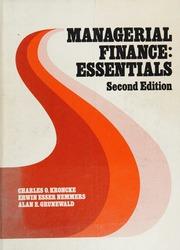Question
Assume you have 150,000 worth of assets (i.e. savings, car, property, etc.). You drive your car to school/university every day and there is a 1
Assume you have 150,000 worth of assets (i.e. savings, car, property, etc.). You drive your car to school/university every day and there is a 1 in 10 (or 10 per cent) chance per year that you will be involved in an accident that results in your car is a write-off. Assume the market value of the car is 20,000 and remains unchanged. You could take out a full insurance policy for the year that pays out the full 20,000 market value of the car if you have the accident. Assume the insurance company has many customers with exactly the same assets as you and who all face the same risk of being involved in a similar accident.
a. What is the break-even/actuarially fair insurance premium in this case?
b. Draw a diagram to illustrate your answers to the previous questions.
c. Assume the administration costs for the insurance company are 5 per customer. Explain why mutually beneficial trade is possible at a particular price for the insurance policy. Refer to consumer and producer surplus in your answer.
Assume now that there are two types of driver. One half of them are very skilful drivers and each of these has only a 5 per cent chance per year of being involved in a car accident while the other half are less able/careful drivers who each have a 15 per cent chance per year of being involved in an accident.
d. Assume there is perfect information in the market. Calculate an insurance premium for both the very skilful and less careful drivers that would enable mutually beneficial trade. Assume the administrative costs for the insurance company are 5 for both types of customer.
e. Assume now that there is asymmetric information in the market. When a customer purchases a policy, the insurance company does not know if they are skilful or less able drivers. What is the break-even/actuarially fair insurance premium if the insurance company assumes that 50 per cent of its customers are the skilful drivers and 50 per cent are the less able drivers? What premium might the insurance company charge on this basis?
f. Using your answers to parts d. and e, predict what you think will happen in the market. Explain how it illustrates the process of adverse selection. Calculate any lost surplus per customer.
g. Briefly explain some actions that could be taken by customers and suppliers in this market to reduce the chances of adverse selection so enabling mutually beneficial trade.
Step by Step Solution
There are 3 Steps involved in it
Step: 1

Get Instant Access to Expert-Tailored Solutions
See step-by-step solutions with expert insights and AI powered tools for academic success
Step: 2

Step: 3

Ace Your Homework with AI
Get the answers you need in no time with our AI-driven, step-by-step assistance
Get Started


